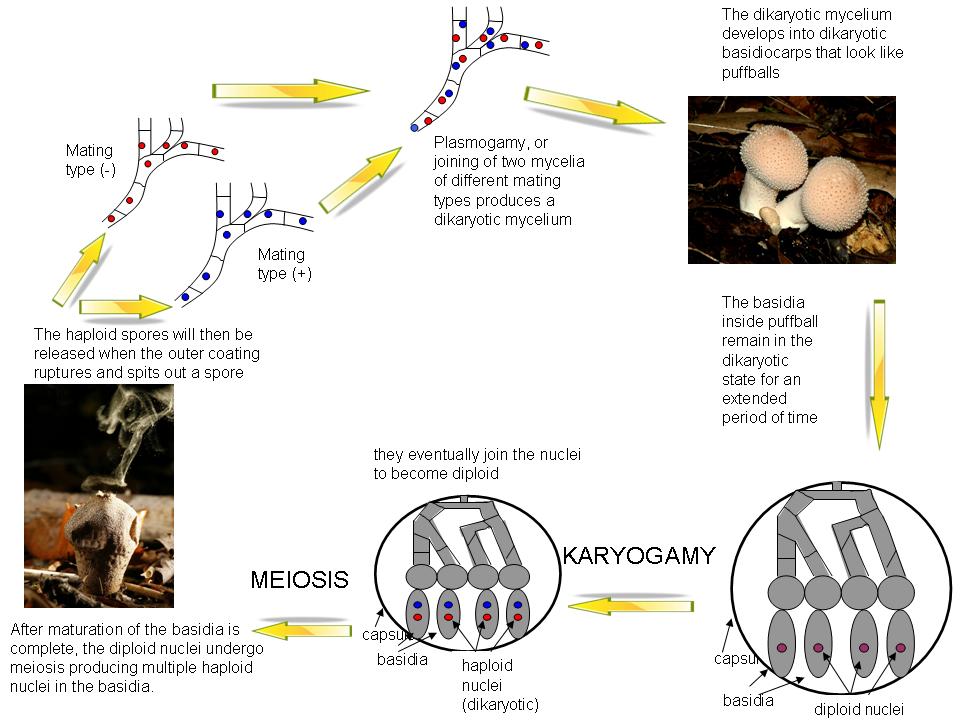Reproduction/ Life Cycle
So what’s with the “puffball” name anyway?
Photo by Tom
Volk
The physical appearance
of the reproductive structure of this fungus looks like a puffy
marshmallow may be one reason for its name, but there is another
possibility. The
reproduction of Lycoperdon pyriforme, as with all fungi, depends upon the ability to
disperse its spores.
This is done by spurting out perhaps billions of spores all in
one event that resembles a cloudy “puff”.
Some sort of outside force is usually required for this
to occur such as wind, rain, or some animal stepping on it or
squishing it.
General basidiomycota lifecycle:
The lifecycle of
L. pyriforme is fairly
similar to other basidiomycota.
There are haploid (n) and diploid (2n) forms as well as a
long dikaryotic phase (n+n).
Compatable haploid hyphae may combine or “mate” by
stuffing both nuclei into a single hyphal cell (plasmogomy).
At this point the organism is known as a dikaryote since
it has two (“di”) distinct nuclei (“karyote”) and develops the
reproductive structure.
When certain cells undergo karyogamy, the two haploid
nuclei join and form diploid cells called basidia located on the
underside of the mushroom in the gills.
Meiosis of these cells produce haploid basidiospores
which are exposed to the air such that a wind can carry them off
to a new location.
The
L. pyriforme lifecycle
has a few differences.
The dikaryotic reproductive mushroom forms an almost
spherical enclosure that consists of capsules of the dikaryotic
basidia. This is vastly
different from Ascomycota that produce external spores (see
Orange Peel Fungus as an example). After
maturation, these basidia may then meiose and give rise to the
haploid basidiospres (still inside the capsules).
When ready, the outer enclosure ruptures giving off a
cloud of spores. The
diagram below serves as a better illustration of a
L. pyriforme specific
lifecycle.

life cycle adopted from Cambell and Reece Biology, eight edition photo above-left by Ian Hayhurst on flickr.com, photo above-right by glsol on flickr.com